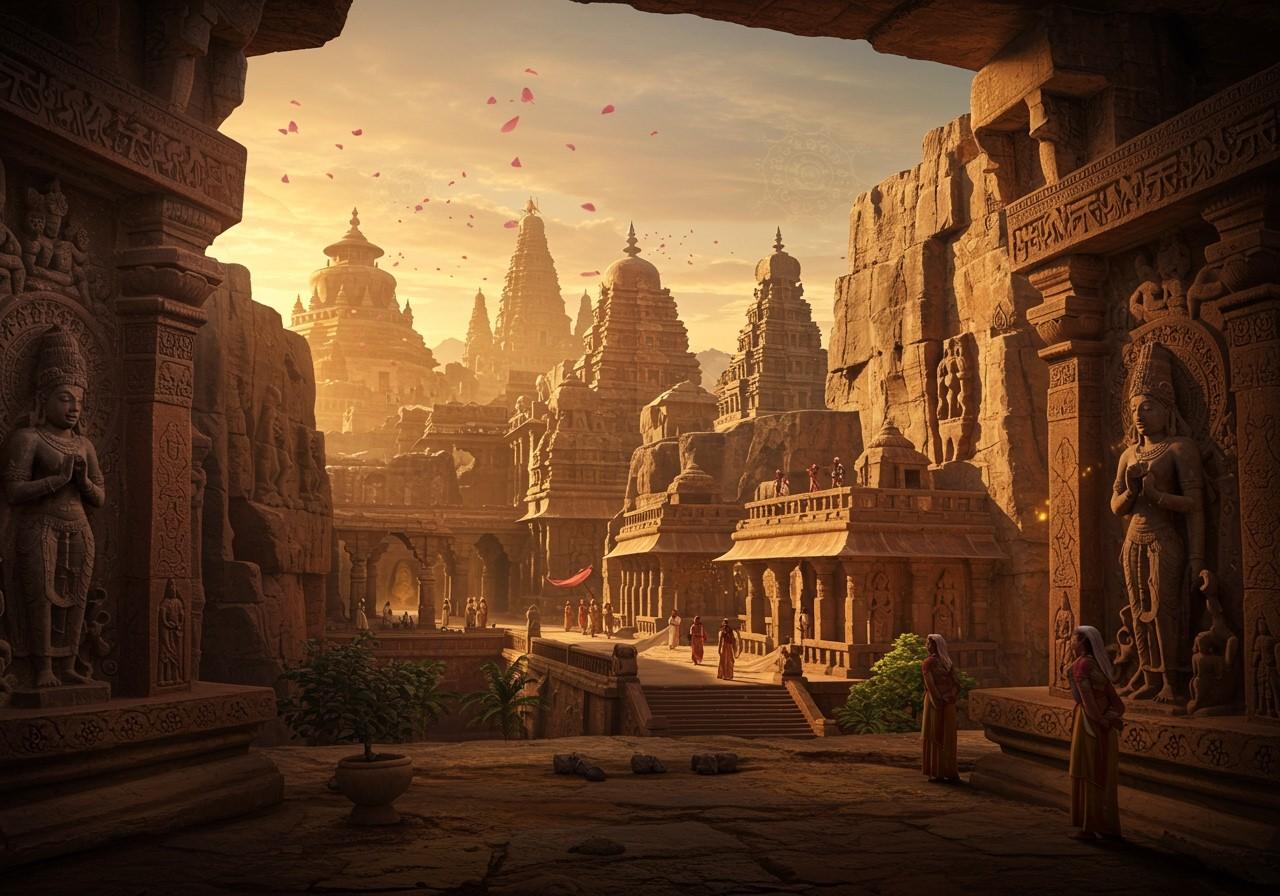
The Satavahana dynasty, also known as the Andhras, significantly influenced India’s culture, architecture, and art from the late 2nd century BCE to the early 3rd century CE. This dynasty, founded by Simuka, held significant power in western and central India, leaving behind a rich legacy. This guide explores famous temples, cities, and caves from this era, allowing you to discover their beauty and plan your visit with the help of online resources.
Amaravati: The Satavahana Capital
Amaravati, located in present-day Andhra Pradesh, served as the dynasty’s capital. The magnificent Great Stupa of Amaravati, one of India’s largest and most intricate Buddhist stupas, stands as a testament to their architectural prowess. Adorned with inscriptions and sculptures, the stupa reflects the rich heritage of Buddhist art. The Amaravati Archaeological Museum houses a vast collection of artifacts from this period, offering further insights into the Satavahana era.
Magnificent Temples of the Satavahana Period
Several temples built during the Satavahana dynasty showcase their architectural brilliance and patronage of Buddhism. The Kanaganahalli Maha Stupa, with its detailed carvings and Buddhist-themed sculptures, is a prime example. The temples of Nagarjunakonda further highlight the dynasty’s devotion to Buddhism. The Guntupalli group of Buddhist monuments, including rock-cut caves and structural temples, offers a unique blend of architectural styles. Other notable sites include the Bhattiprolu Stupa, known for its inscriptions, and the historically significant Dhulikatta Buddhist stupa. In Paithan, Maharashtra, Satavahana-era temples display distinct architectural features.
Karla Caves: A Legacy of Satavahana Patronage
The Karla Caves, a complex of rock-cut Buddhist caves, stand as a testament to Satavahana patronage. These caves feature grand chaityas (prayer halls) and viharas (monasteries), their walls adorned with intricate sculptures and inscriptions depicting Buddhist motifs. The main prayer hall at Karla is one of India’s largest rock-cut chaityas. Nearby, the Bhaja Caves and Bedsa Caves share similar architectural styles and historical significance, reflecting the spread of Buddhism during this era. Ongoing conservation efforts aim to preserve these ancient structures for future generations.
Other Important Satavahana Sites
Beyond the prominent temples and caves, numerous other sites offer glimpses into the Satavahana world. The Junnar caves, a complex of over 200 caves, served as religious centers. The archaeological sites of Kondapur, Ter, Sannati, Adam, and Nevasa reveal artifacts, urban planning skills, sculptures, inscriptions, pottery, and insights into daily life during the Satavahana era. Pratishthana (modern Paithan), a major urban center during this period, played a crucial role in the dynasty’s political and economic landscape.
Poojn.in: Your Companion for Satavahana Site Visits
Enhance your visits to Satavahana sites and temples with essential puja items and religious supplies from Poojn.in. We offer a range of products to support your ritual practices:
- Temple Visit Kit: A convenient travel-friendly package containing essentials like roli, chandan, akshat, and flowers. This kit ensures you have everything needed for traditional rituals during your temple visits.
- Pure Copper Water Vessels: Carry sacred water during temple rituals with traditional copper kalash, adding authenticity to your practices. Our copper vessels are crafted with high-quality materials.
- Cotton Vastram Sets: Dress respectfully for temple visits with our clean, pure cotton clothing sets. These sets are designed for comfort and adherence to traditional customs.
- Organic Incense Sticks: Offer prayers with our organic incense sticks, made from natural ingredients. The pleasant aroma enhances the spiritual atmosphere during your temple visits.
- Traditional Oil Lamps: Perform aarti ceremonies with our portable brass diyas. These lamps add a traditional touch to your rituals and create a serene ambiance.
Visit www.poojn.in or call our toll-free number to order. We offer special packaging and discounts for bulk orders, catering to group travel needs.
Conclusion: Embracing the Satavahana Heritage
Exploring Satavahana sites offers a profound connection to India’s rich history and culture. Each site, from the Amaravati Stupa to the Karla Caves, narrates a story of architectural brilliance, spiritual devotion, and artistic innovation. Embark on this journey to appreciate the Satavahana dynasty’s lasting legacy and its significant contribution to India’s cultural and architectural landscape.
More resources about related topics:
- Kandariya Mahadeva Temple: Religious Importance and History
- Badami Cave Temples: Chalukya Dynasty Architecture
- Pure Cotton Cherry Color Pooja Asan 24×24


